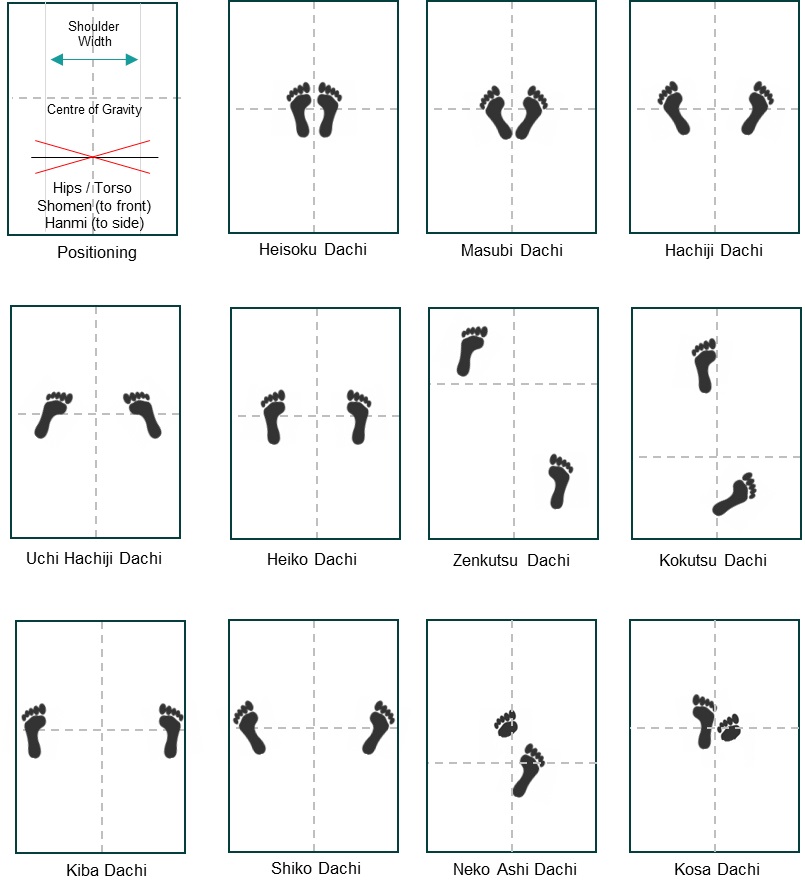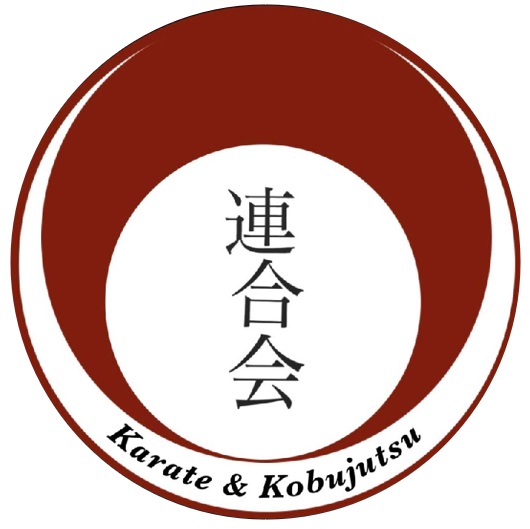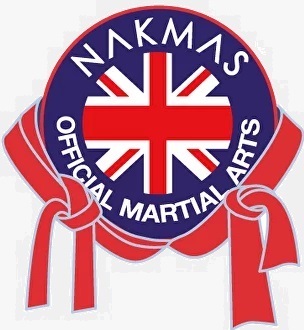Etiquettes
We recognise the wide range of Martial Arts, and whilst we focus on the practice of traditional Shotokan Karate for our syllabus and gradings, we explore other techniques and styles. In all Martial Arts, there are some traditional etiquettes to observe. For example, it is seen as good manners to bow, before entering the Dojo, and to turn to the Dojo, and bow just before leaving. Shoes (unless for medical reasons) are not worn, and karate is usually practiced bare footed.
Sensei is in charge, and we are expected to exercise control and respect at all times. In our main discipline (Shotokan Karate), we follow in the traditions of Sensei Gichin Funakoshi (1869-1957), an Okinawan who studied with Sensei Itosu, and Sensei Asato, and who brought together over a thousand years of traditional karate as it spread from China into Japan into what is known today as modern Karate. Our syllabus is that which was shaped by Sensei Funakoshi and his student, Sensei Masatoshi Nakayama (1913-1987), in the first Japanese Karate Dojo (training hall) which Sensei Funakoshi opened in Tokyo in 1936. Sensei Funakoshi was also a poet and philosopher, and Shotokan is named from the comibination of Funakoshi’s pen name, Shoto which translates as waving pine, and Kan which means house.
Where to stand
Training in the Dojo is organised in rows, with room around each Karateka to ensure they do not impede or bump into those around them. This in effect becomes a grid, facing Sensei who stands at the front facing towards us. The most senior Karateka will be closest to the front right (Sensei’s left), and the least senior will be at the back left of the Dojo, far right from Sensei.
Stances and foot placement
The graphic below sets out the foot positions for defined stances.

Competition Etiquette
Competitions may be arranged for age, weight and gender, but will always recognise the relative ability (as per belt colour) of the Karateka. Amateur Competitions are predominantly no-contact demonstration of skill in Kumite, and may have Katas for individual, one person against another, and as a synchronised group Kata.
Competitions may often have several events occurring at one time, and have several areas set out. These will usually have mats laid down in an 8*8 Meter square, potentially with an extra border for safety.
Competitors are assigned as Aka (Red), or Shio (white), and may be asked to wear an addtional red or white belt, or loop of material attached to their belts. On a mat, the Aka competitor will commence and return to the area to the head judges right, Shiro to their left.
The head judge may stand or sit at the front of the matted area. Four further judges will attend, situated at each corner. All judges are equipped with a red (Aka), and a white (Shiro) flag, which they hold up to show that the competitor (Aka) or competitor (Shiro) wins their decision. (The majority usually is carried, with the Head judge having the deciding vote).
As with Dojo Etiquettes, there are similar traditions to observe, including not entering the matted area unless being invited to do so (by the head judge), and bowing to the front before doing so. Similarly, bowing to your opponent(s) before and after the bout, and to the main judge, both before leaving the mats, and immediately after stepping off the mat. Kumite competitors will enter the mat, to a point 3m apart, facing the judges, before turning to each other. Often there will be markings on the mat to help. For Kata, competitors will (when invited) enter the mat, and organise themselves at a start point that allows the Kata to be performed within the mats area.
Katas take as long as they take, however, Kumite is 3 minutes, of the first competitor to achieve a full point, with the potential for a 1 minute extension if it is undecided at the 3 minute time. Half a point is given for a correct technique, a full point for a correct decisive technique, and points can be deducted for unsporting behaviour, or foul techniques. After any score / hold or at Yame, the competitors should return to their start point. At the end of the Kumite/Kata, the competitors should wait for the Judge’s decision.
Competition Terms
See general terms, but additional, competition specific terms are applied, and it is quite common that only the Japanese versions of these will be used.
| Term | Translation |
| Aka | Red |
| Ana Ta No Kachi | You are the winner |
| Atenai Yoni | Warning |
| Awaza Te Ippon | Full point |
| Chui Ichi / Ni | Formal (first) or final warning |
| Encho Sen | Extra Time |
| Fukushin | Judge |
| Fukushin Shugo | Head judge brings judges together for debate |
| Genten | Penalty |
| Hikiwake | Draw (judges may cross hands accross themselves) |
| Ippon | Full point – combined, or decisive technique |
| Jogai | Sometimes used to tell competitors to leave the Shaiaijo |
| Kakenige | Unsafe retreating (foul/penalty) |
| Kiken | Retired because of injury |
| Mienai | Judge couldn’t see – may hold hands over eyes |
| Moto No Ichi | Go return to original start position (Aka, to judges right) |
| No Kachi | Winner, usually as Aka No Kachi, or Shiro No Kachi |
| Shaiaijo | Contest area (mat) |
| Shiro | White |
| Shitei | Compulsory Kata |
| Tokui | Favourite, or competitor’s chosen kaata |
| Toranai | No point (maybe as both with simultaneous strikes) |
| Torimasen | No point, strike was not a recogniseable technique |
| Waza Ari | Half point (successful technique) |
| Yame | Stop |
| Zokko | Resume bout |


